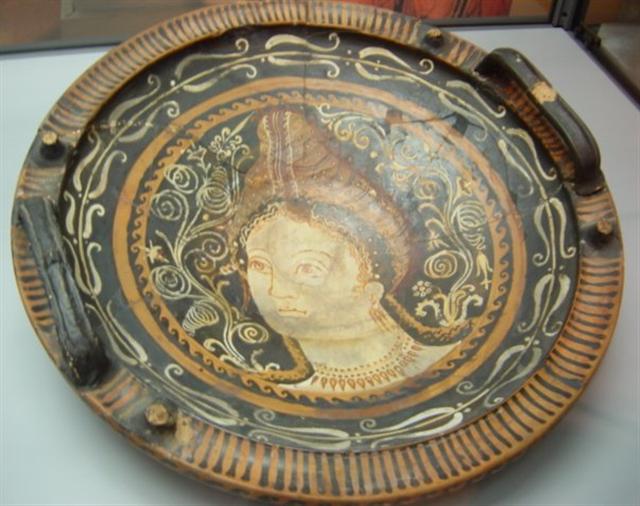|
4. We had better list also the rest of the stars in Crater (10 of them). If we don't do it now it will probably never be done:
Allen does not mention Labrum (δ), but according to Wikipedia it is Latin for 'an edge, rim of a vessel' (which it hardly denotes in the normal representation of the constellation). But the vessel in question surely is Crater: "A krater (in Greek: κρατήρ, kratēr, from the verb κεράννυμι, keránnymi, 'to mix') was a large vase used to mix wine and water in Ancient Greece ... At a Greek symposium, kraters were placed in the center of the room. They were quite large, so they were not easily portable when filled. Thus, the wine-water mixture would be withdrawn from the krater with other vessels. In fact, Homer's Odyssey describes a steward drawing wine from a krater at a banquet and then running to and fro pouring the wine into guests' drinking cups ..." (Wikipedia) I guess we should pay attention to the key ingredients of the krater, viz. a place in the center and a place where fluids are mixed. As to Alkes (α) Allen mentions this name when listing names for the constellation: "In early Arabia it was Al Ma'laf, the Stall, - a later title there for the Praesaepe of Cancer; but when the astronomy of the Desert came under Greek influence it was Al Bātiyah, the Persian Badiye, and the Al Batinah of Al Achsasi, all signifying an earthen vessel for storing wine. Another title, Al Kās, a Shallow Basin, - Alhas in the Alfonsine lists, - has since been turned into Alker and Elkis; but Scaliger's suggestion of Alkes generally has been adopted, although now applied to the star α. These same Tables Latinized it as Patera, and as Vas, or Vas aquarium."
(A Roman patera.) And as to Al Sharas (β) he says: "β ... at the southern edge of the base, was one of Al Tizini's Al Sharāsīf, the Ribs, - i.e. of Hydra, - and the first of the set." |
||||||||||||||||||||||||||||||||||||||||||||||||||||||||||||||||||||||||||||||||||||||||||||||||||||||||||||||||||||||||||||||||||||||||||||||||||||||||||||||||||||||||||||||||||||||||||||||||||||||||||||||||||||||||||||||||||||||










